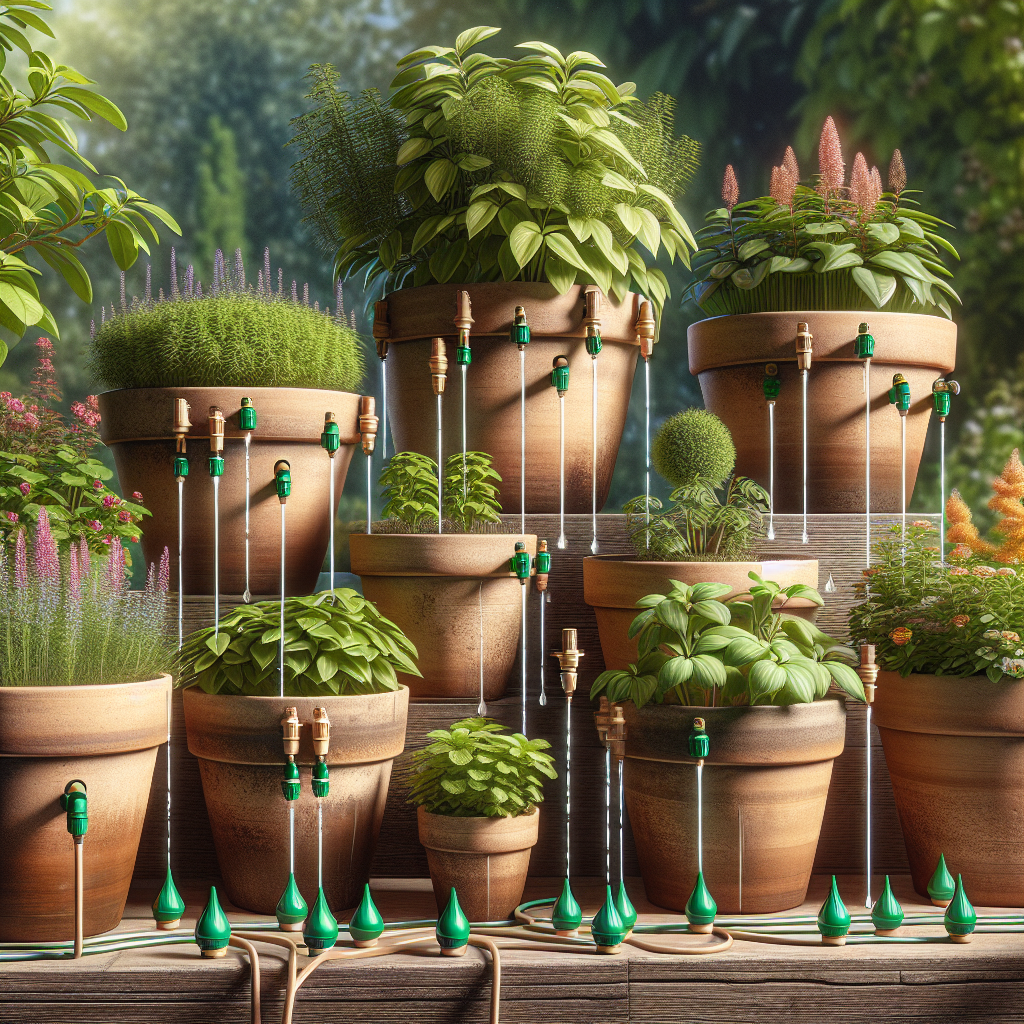Efficient Watering: Setting Up a Slow Drip System for Healthier Pots
When it comes to keeping your potted plants healthy and thriving, proper watering is key. Many people struggle with overwatering or underwatering their plants, which can lead to root rot, wilting, or even death. One effective solution to this common problem is setting up a slow drip watering system for your pots. This method allows water to be delivered directly to the roots of the plants at a slow and consistent rate, ensuring they receive just the right amount of moisture without being overwhelmed.
In this article, we will guide you through the process of setting up a slow drip system for your potted plants. We will cover everything from choosing the right materials to adjusting the flow rate for different types of plants. By following these steps, you can ensure that your plants stay healthy and vibrant all year round.
**Choosing The Right Materials**
The first step in setting up a slow drip watering system for your pots is choosing the right materials. You will need a few key items to get started:
– Drip irrigation tubing: This is flexible tubing that allows water to flow through it at a slow rate. You can find drip tubing at most garden centers or hardware stores.
– Connectors: These are pieces that allow you to connect multiple pieces of tubing together or attach the tubing to your water source.
– Emitters: Emitters are small devices that control the flow of water from the tubing. You can choose emitters with different flow rates depending on the needs of your plants.
– Water timer: A water timer is a device that allows you to control when and how long your plants are watered. This can be especially helpful if you have a busy schedule and may forget to water your plants regularly.
**Setting Up The System**
Once you have gathered all of your materials, it’s time to set up the slow drip system for your pots. Follow these steps to ensure proper installation:
1. Start by cutting lengths of drip tubing to fit each pot in your garden. Make sure to leave some extra length at each end for connecting the tubing together.
2. Attach connectors to each end of the tubing so you can connect multiple pieces together if needed.
3. Place an emitter at each pot, making sure it is positioned near the plant’s roots.
4. Connect one end of the tubing to your water source using a connector and secure it in place.
5. Set up your water timer according to your plant’s watering needs and connect it to the other end of the tubing.
6. Turn on your water source and adjust the flow rate using the emitters until you achieve a slow drip.
**Adjusting The Flow Rate**
One advantage of using a slow drip system is that you can easily adjust the flow rate based on the needs of different plants in your garden. Some plants may require more water than others, so it’s important to monitor their growth and adjust accordingly.
If you notice that certain plants are wilting or showing signs of overwatering, you can decrease the flow rate by switching out emitters with lower ratings or adjusting them manually. On the other hand, if some plants seem thirsty or dried out, increase their flow rate by using emitters with higher ratings.
By fine-tuning the flow rate for each pot in your garden, you can ensure that every plant receives just the right amount of moisture they need without wasting excess water.
**FAQs**
Q: How often should I water my potted plants with a slow drip system?
A: The frequency of watering depends on several factors such as plant type, soil type, weather conditions among others; but as a general rule consider twice weekly during summer months – once in spring & fall respectively while reducing winter months maybe weekly instead.
Q: Can I use rainwater for my slow drip system?
A: Yes! Rainwater not only provides essential nutrients but also saves money compared tap-water usage so always try not let rainwater go waste & utilize whenever possible!
Q: How do I prevent clogging in my drip irrigation system?
A: To prevent clogging make sure use clean-water sources such as filtered rainwater gutter cleaner screens while installing filters where necessary helps keep systems running smoothly without blockages occurring easily.
In conclusion, setting up a slow drip watering system for your potted plants is an efficient way to ensure they receive just enough moisture without causing any harm from overwatering or underwatering . By following these steps and tips provided above; anyone with even minimal gardening experience should be able set-up own personalized version within days!













